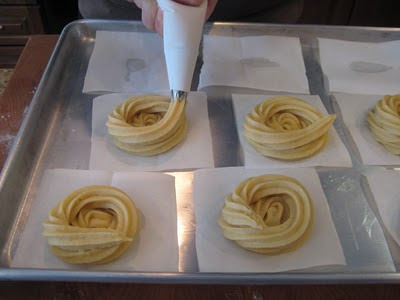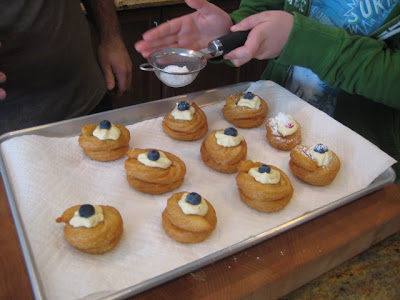Celebrate The Woman in Your Kitchen Fig.1. My grandmother, Piacentina Viselli. This picture was taken shortly before she boarded a ship heading to the new world.
Fig.1. My grandmother, Piacentina Viselli. This picture was taken shortly before she boarded a ship heading to the new world.
Another round of the Montreal Highlights Festival has come to a close. This year, the festival celebrated women in the kitchen, a somewhat patronizing and outdated notion when we look at the role women have played in the domestic kitchen. From this very role, however, stems a conflict that arises when one juxtaposes the role women play in the restaurant kitchen at present, with how they are perceived when images of June Cleaver come to mind.
The woman’s rise to executive chef justly captures an air of accomplishment when one considers what was expected of women throughout history. In an arena dominated by men, this is indeed an accomplishment, if, for any reason beyond the food, for sheer ambition and overcoming misplaced preconceptions. But among the many roles wrongly subjugated upon women in days past, the role women played as the matriarch of the family, in my opinion, should be celebrated and held in reverent awe. Within my family, without my grandmother there to hold the family together, we would have been where it is now, growing apart, a result surely of which is due to my grandmother’s age and inability to do what she once did.
In my family, my grandmother was the glue that held the aunts, uncles and cousins together. Sunday family feasts were something that my cousins and I always looked forward to. She always made it look easy: fresh pasta, meatballs, sausages, rapini, roasted peppers, and fresh bread from the bakery; the Sunday norm. The reality is that it is easy; finding the willingness and the drive to do it amidst a five-day work-week and the kid’s soccer practice is not. This is, however, merely an excuse.
I recognize that what my grandfather expected from my grandmother was wrong, (a view still held in many parts of the world today.) What I got from her, as a grandson, was a sense of family and an obscene appreciation for food, and for that I hold her in the utmost respect. So in the spirit of this year’s Highlights Festival, visit your grandmother, or mother, and cook something together.
Zuppa di LenticchieLentil SoupServes 6 to 8 Fig.2. Thick and hearty lentil soup. One bowl of this protien, filled dish will keep you going for a long time.
Fig.2. Thick and hearty lentil soup. One bowl of this protien, filled dish will keep you going for a long time.My grandmother made these lentils in the winter. The best part about them was eating them out of the pot while they sat in the cold room. Letting the lentils sit overnight develops more flavour.
Ingredients:
4 tbsp olive oil
6 slices bacon, sliced
3 onions, chopped
3 medium potatoes, diced
2 carrots, chopped
2 stalks celery
5 cloves garlic, whole
¾ cup white wine
1 28oz can whole plums tomatoes, crushed by hand
5 cups of cooked lentils (Cook according to instructions on the package, also, it’s best to use lentils that will keep their shape, my grandmother always used Eston green lentils. Read the package)
salt and pepper to taste
Directions:
Add the olive oil to a heavy bottom pot set over medium high heat. Sauté the bacon and onions until slightly golden and a nice fond forms at the bottom of the pan, about 8 to 10 minutes. Add the potato, carrots, celery and garlic and cook for about 5 to 6 minutes. Add the wine, and using a wooden spoon, scrape the bottom of the pan. Cook until wine reduces by half, add the tomatoes and the cooked lentils, season with salt and pepper, cover partially, and bring to a gentle simmer. Simmer long and gently until thickened and the carrots become tender. Should the stew become to dry, just add some chicken stock or some water. Serve hot with a sprinkle of pecorino cheese and a drizzle of extra-virgin olive oil.
 Fig.1. Hanging Caribou meat to freeze in Nunavut, Calgary Angus beef, Maritime Lobster, Pacific salmon and tortiere de Lac St-Jean.
Fig.1. Hanging Caribou meat to freeze in Nunavut, Calgary Angus beef, Maritime Lobster, Pacific salmon and tortiere de Lac St-Jean. 


















